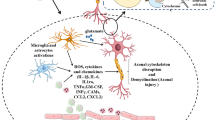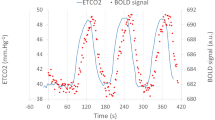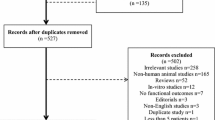Abstract
Traumatic brain injuries (TBIs) are associated with high morbidity and mortality due to both the original insult as well as the destructive biological response that follows. Medical management aims to slow or even halt secondary neurological injury while simultaneously laying the groundwork for recovery. Statins are one class of medications that is showing increased promise in the management of TBI. Used extensively in cardiovascular disease, these drugs were originally developed as competitive inhibitors within the cholesterol production pipeline. They are now used in diverse disease states due to their pleiotropic effects on other biological processes such as inflammation and angiogenesis. Preclinical studies, retrospective reviews, and randomized clinical trials have shown a variety of benefits in the management of TBI, but to date, no large-scale randomized clinical trial has been performed. Despite this limitation, statins’ early promise and well-tolerated side effect profile make them a promising new tool in the management of TBIs. More bench and clinical studies are needed to delineate proper treatment regimens as well as understand their true potential.


Similar content being viewed by others
References
Maas AIR, et al. Traumatic brain injury: integrated approaches to improve prevention, clinical care, and research. Lancet Neurol. 2017;16:987–1048.
Frieden TR, Houry D, Baldwin G. Traumatic Brain injury in the United States: epidemiology and rehabilitation. CDC NIH Rep to Congr. 2015;1–74.
Feigin VL, et al. Incidence of traumatic brain injury in New Zealand: a population-based study. Lancet Neurol. 2013;12:53–64.
Rosenfeld Jv, et al. Early management of severe traumatic brain injury. Lancet. 2012;380:1088–1098.
Plassman BL, et al. Documented head injury in early adulthood and risk of Alzheimer’s disease and other dementias. Neurology. 2000;55:1158–66.
Mahler B, et al. Unprovoked seizures after traumatic brain injury: a population-based case-control study. Epilepsia. 2015;56:1438–44.
Hart T, et al. Major and minor depression after traumatic brain injury. Arch Phys Med Rehabil. 2011;92:1211–9.
Riggio S, Wong M. Neurobehavioral sequelae of traumatic brain injury. Mount Sinai Journal of Medicine: J Transl Pers Med. 2009;76:163–72.
Rohling ML, Faust ME, Beverly B, Demakis G. Effectiveness of cognitive rehabilitation following acquired brain injury: a meta-analytic re-examination of Cicerone et al.’s (2000, 2005) systematic reviews. Neuropsychology. 2009;23:20–39.
Bullock MR, et al. Surgical management of traumatic brain injury. Neurosurgery. 2006;58:16–24.
Timofeev I, et al. Ventriculostomy for control of raised ICP in acute traumatic brain injury. 2008;99–104. https://doi.org/10.1007/978-3-211-85578-2_20.
Chang BS, Lowenstein DH. Practice parameter: antiepileptic drug prophylaxis in severe traumatic brain injury. Report of the Quality Standards Subcommittee of the American Academy of Neurology. Neurology. 2003;60:10–16.
Rangel-Castillo L, Gopinath S, Robertson CS. Management of intracranial hypertension. Neurol Clin. 2008;26:521.
Marehbian J, Muehlschlegel S, Edlow BL, Hinson HE, Hwang DY. Medical management of the severe traumatic brain injury patient. Neurocritical Care. 2017;27(3):430–446.
Gruenbaum SE, Zlotnik A, Gruenbaum BF, Hersey D, Bilotta F. Pharmacologic neuroprotection for functional outcomes after traumatic brain injury: a systematic review of the clinical literature. CNS Drugs. 2016;30:791–806.
Temkin NR, et al. Magnesium sulfate for neuroprotection after traumatic brain injury: a randomised controlled trial. Lancet Neurol. 2007;6:29–38.
Lulic D, Burns J, Bae EC, van Loveren H, Borlongan Cv. A review of laboratory and clinical data supporting the safety and efficacy of cyclosporin A in traumatic brain injury. Neurosurgery. 2011;68:1172–1186.
Farooqui AA, Ong WY, Horrocks LA, Chen P, Farooqui T. Comparison of biochemical effects of statins and fish oil in brain: the battle of the titans. Brain Res Rev. 2007;56:443–71.
Steinberg, D. Thematic review series: the pathogenesis of atherosclerosis. An interpretive history of the cholesterol controversy, part V: The discovery of the statins and the end of the controversy. J Lipid Res. 2006;47:1339–1351.
Endo A. The discovery and development of HMG-CoA reductase inhibitors. J Lipid Res. 1992;33:1569–82.
Pedersen TR, et al. Effect of simvastatin on ischemic signs and symptoms in the scandinavian simvastatin survival study (4S). Am J Cardiol. 1998;81:333–5.
Lin SY, et al. Trends in use and expenditures for brand-name statins after introduction of generic statins in the US, 2002–2018. JAMA Netw Open. 2021;4:e2135371–e2135371.
Goldstein JL, Brown MS. Regulation of the mevalonate pathway. Nature. 1990;343:425–30.
Jain MK, Ridker PM. Anti-inflammatory effects of statins: clinical evidence and basic mechanisms. Nat Rev Drug Discover 2005;4(12):977–987.
Kwak B, Mulhaupt F, Myit S, Mach F. Statins as a newly recognized type of immunomodulator. Nat Med. 2000;6.
Ridker PM, Rifai N, Pfeffer MA, Sacks F, Braunwald E. Long-term effects of pravastatin on plasma concentration of C-reactive protein. The Cholesterol and Recurrent Events (CARE) Investigators. Circulation. 1999;100:230–5.
Pannu R, Barbosa E, Singh AK, Singh I. Attenuation of acute inflammatory response by atorvastatin after spinal cord injury in rats. J Neurosci Res. 2005;79:340–50.
Ehrenstein MR, Jury EC, Mauri C. Statins for atherosclerosis — as good as it gets? N Engl J Med. 2005;352:73–5.
Katznelson S, et al. The effect of pravastatin on acute rejection after kidney transplantation–a pilot study. Transplantation. 1996;61:1469–74.
Anderson TJ, et al. The effect of cholesterol-lowering and antioxidant therapy on endothelium-dependent coronary vasomotion. N Engl J Med. 1995;332:488–93.
Balakumar P, Kathuria S, Taneja G, Kalra S, Mahadevan N. Is targeting eNOS a key mechanistic insight of cardiovascular defensive potentials of statins? J Mol Cell Cardiol. 2012;52:83–92.
Mauch DH, et al. CNS synaptogenesis promoted by glia-derived cholesterol. Science. 2001;294:1354–7.
Fan Q-W, et al. Cholesterol-dependent modulation of dendrite outgrowth and microtubule stability in cultured neurons. J Neurochem. 2002;80:178–90.
Zacco A, et al. 3-hydroxy-3-methylglutaryl coenzyme A reductase inhibitors protect cortical neurons from excitotoxicity. J Neurosci. 2003;23:11104–11.
Johnson-Anuna LN, et al. Simvastatin protects neurons from cytotoxicity by up-regulating Bcl-2 mRNA and protein. J Neurochem. 2007;101:77–86.
Wu H, Mahmood A, Qu C, Xiong Y, Chopp M. Simvastatin attenuates axonal injury after experimental traumatic brain injury and promotes neurite outgrowth of primary cortical neurons. Brain Res. 2012;1486:121–30.
McFarland AJ, et al. Molecular mechanisms underlying the effects of statins in the central nervous system. Int J Mol Sci. 2014;15:20607–20637 15, 20607–20637.
Garcia M, Reinoso R, Sanchez Navarro A, Prous J. Clinical pharmacokinetics of statin. Methods Find Exp Clin Pharmacol. 2003;25:457–481.
Botti RE, Triscari J, Pan HY, Zayat J. Concentrations of pravastatin and lovastatin in cerebrospinal fluid in healthy subjects. Clin Neuropharmacol. 1991;14:256–61.
Johnson-Anuna LN, et al. Chronic administration of statins alters multiple gene expression patterns in mouse cerebral cortex. J Pharmacol Exp Ther. 2005;312:786–93.
Thompson PD, Clarkson P, Karas RH. Statin-associated myopathy. JAMA. 2003;289:1681–90.
Ganga Hv, Slim HB, Thompson PD. A systematic review of statin-induced muscle problems in clinical trials. Am Heart J. 2014;168:6–15.
Russo MW, et al. Spectrum of statin hepatotoxicity: experience of the drug-induced liver injury network. Hepatology. 2014;60:679–86.
Charles EC, Olson KL, Sandhoff BG, McClure DL, Merenich JA. Evaluation of cases of severe statin-related transaminitis within a large health maintenance organization. Am J Med. 2005;118:618–24.
Swerdlow DI, et al. HMG-coenzyme A reductase inhibition, type 2 diabetes, and bodyweight: evidence from genetic analysis and randomised trials. Lancet. 2015;385:351–61.
Riaz H, et al. Meta-analysis of placebo-controlled randomized controlled trials on the prevalence of statin intolerance. Am J Cardiol. 2017;120:774–81.
Mountney A, et al. Simvastatin treatment in traumatic brain injury: operation brain trauma therapy. J Neurotrauma. 2016;33:567–80.
Chen S-F, et al. Lovastatin improves histological and functional outcomes and reduces inflammation after experimental traumatic brain injury. Life Sci. 2007;81:288–98.
Wang H, et al. Simvastatin and atorvastatin improve behavioral outcome, reduce hippocampal degeneration, and improve cerebral blood flow after experimental traumatic brain injury. Exp Neurol. 2007;206:59–69.
Wu H, et al. Induction of angiogenesis and modulation of vascular endothelial growth factor receptor-2 by simvastatin after traumatic brain injury. Neurosurgery. 2011;68:1363–71.
Wang K-W, et al. Simvastatin combined with antioxidant attenuates the cerebral vascular endothelial inflammatory response in a rat traumatic brain injury. Biomed Res Int. 2014;2014:1–6.
Xu X, et al. Anti-inflammatory and immunomodulatory mechanisms of atorvastatin in a murine model of traumatic brain injury. J Neuroinflammation. 2017;14:167.
Lu D, et al. Atorvastatin reduction of intravascular thrombosis, increase in cerebral microvascular patency and integrity, and enhancement of spatial learning in rats subjected to traumatic brain injury. J Neurosurg. 2004;101:813–21.
Lu D, et al. Atorvastatin reduces neurological deficit and increases synaptogenesis, angiogenesis, and neuronal survival in rats subjected to traumatic brain injury. J Neurotrauma. 2004;21:21–32.
Lu D, et al. Statins increase neurogenesis in the dentate gyrus, reduce delayed neuronal death in the hippocampal CA3 region, and improve spatial learning in rat after traumatic brain injury. J Neurotrauma. 2007;24:1132–46.
Darwish H, Mahmood A, Schallert T, Chopp M, Therrien B. Simvastatin and environmental enrichment effect on recognition and temporal order memory after mild-to-moderate traumatic brain injury. Brain Inj. 2014;28:211–26.
Xie C, et al. The effect of simvastatin treatment on proliferation and differentiation of neural stem cells after traumatic brain injury. Brain Res. 2015;1602:1–8.
Mahmood A, et al. Long-term benefits after treatment of traumatic brain injury with simvastatin in rats. Neurosurgery 2009;65:187–91, discussion 191–2.
Mountney A, et al. Intravenous administration of simvastatin improves cognitive outcome following severe traumatic brain injury in rats. J Neurotrauma. 2016;33:1492–500.
Lu D, et al. Delayed thrombosis after traumatic brain injury in rats. J Neurotrauma. 2004;21:1756–66.
Lu D, et al. Atorvastatin reduction of intracranial hematoma volume in rats subjected to controlled cortical impact. J Neurosurg. 2004;101:822–5.
Abrahamson EE, et al. Cerebral blood flow changes after brain injury in human amyloid-beta knock-in mice. J Cereb Blood Flow Metab. 2013;33:826–33.
Khokhar B, et al. Mortality and associated morbidities following traumatic brain injury in older medicare statin users. Journal of Head Trauma Rehabilitation. 2018;33:E68–76.
Mansi IA, English JL, Alvarez CA, Mortensen EM, Pugh MJ. Statins in survivors of traumatic brain injury: a propensity score-matched analysis. Brain Inj. 2020;34:1367–74.
Redelmeier DA, Manzoor F, Thiruchelvam D. Association between statin use and risk of dementia after a concussion. JAMA Neurol. 2019;76:887.
Li M, et al. Beneficial association of angiotensin-converting enzyme inhibitors and statins on the occurrence of possible Alzheimer’s disease after traumatic brain injury. Alzheimers Res Ther. 2020;12:33.
Sánchez-Aguilar M, et al. Effect of rosuvastatin on cytokines after traumatic head injury. J Neurosurg. 2013;118:669–75.
Tapia-Perez JH, et al. Effect of rosuvastatin on amnesia and disorientation after traumatic brain injury (NCT003229758). J Neurotrauma. 2008;25:1011–7.
Naghibi T, Madani S, Mazloomzadeh S, Dobakhti F. Simvastatin’s effects on survival and outcome in traumatic braininjury patients: a comparative study. Turk J Med Sci. 2016;46:1–5.
Soltani F, et al. The effect of low-dose atorvastatin on inflammatory factors in patients with traumatic brain injury: a randomized clinical trial. Arch Neurosci. 2020;7.
Shafiee S, et al. The effect of oral simvastatin on the clinical outcome of patients with severe traumatic brain injury: a randomized clinical trial. Ethiop J Health Sci. 2021;31:807–16.
Lokhandwala A, et al. Preinjury statins are associated with improved survival in patients with traumatic brain injury. J Surg Res. 2020;245:367–72.
Farzanegan GR, Derakhshan N, Khalili H, Ghaffarpasand F, Paydar S. Effects of atorvastatin on brain contusion volume and functional outcome of patients with moderate and severe traumatic brain injury; a randomized double-blind placebo-controlled clinical trial. J Clin Neurosci. 2017;44:143–7.
Schneider EB, et al. Premorbid statin use is associated with improved survival and functional outcomes in older head-injured individuals. J Trauma. 2011;71:815–9.
Neilson SJ, See AAQ, King NKK. Effect of prior statin use on outcome after severe traumatic brain injury in a South-East Asian population. Brain Inj. 2016;30:993–8.
Orlando A, et al. Unintentional discontinuation of statins may increase mortality after traumatic brain injury in elderly patients: a preliminary observation. J Clin Med Res. 2013;5:168–73.
Robertson CS, et al. Phase II clinical trial of atorvastatin in mild traumatic brain injury. J Neurotrauma. 2017;34:1394–401.
Govindarajan KA, et al. Cortical Thickness in mild traumatic brain injury. J Neurotrauma. 2016;33:1809–17.
Author information
Authors and Affiliations
Corresponding author
Ethics declarations
Conflict of Interest
None.
Additional information
Publisher's Note
Springer Nature remains neutral with regard to jurisdictional claims in published maps and institutional affiliations.
Rights and permissions
Springer Nature or its licensor (e.g. a society or other partner) holds exclusive rights to this article under a publishing agreement with the author(s) or other rightsholder(s); author self-archiving of the accepted manuscript version of this article is solely governed by the terms of such publishing agreement and applicable law.
About this article
Cite this article
Katlowitz, K., Gopinath, S., Cruz Navarro, J. et al. HMG-CoA Reductase Inhibitors for Traumatic Brain Injury. Neurotherapeutics 20, 1538–1545 (2023). https://doi.org/10.1007/s13311-023-01399-9
Accepted:
Published:
Issue Date:
DOI: https://doi.org/10.1007/s13311-023-01399-9




